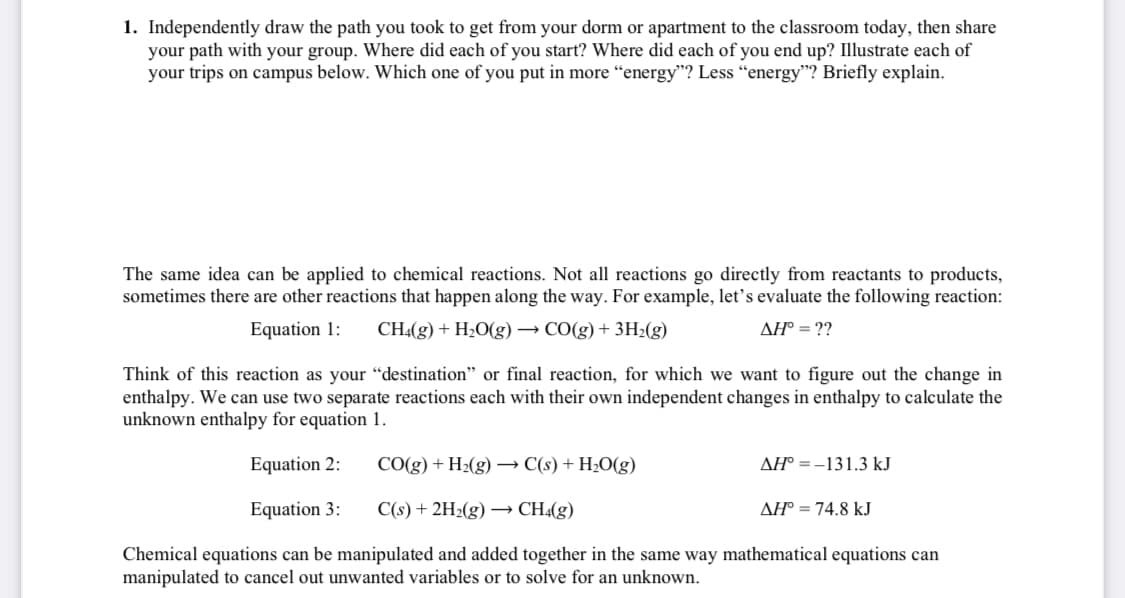1. Independently draw the path you took to get from your dorm or apartment to the classroom today, then share your path with your group. Where did each of you start? Where did each of you end up? Illustrate each of your trips on campus below. Which one of you put in more "energy"? Less "energy"? Briefly explain. The same idea can be applied to chemical reactions. Not all reactions go directly from reactants to products, sometimes there are other reactions that happen along the way. For example, let's evaluate the following reaction: Equation 1: CH4(g) + H2O(g) → CO(g)+ 3H2(g) AH° = ?? Think of this reaction as your "destination" or final reaction, for which we want to figure out the change in enthalpy. We can use two separate reactions each with their own independent changes in enthalpy to calculate the unknown enthalpy for equation 1. Equation 2: CO(g) + H2(g) → C(s) + H2O(g) AH° =-131.3 kJ Equation 3: C(s) + 2H2(g) → CH4(g) AH° = 74.8 kJ Chemical equations can be manipulated and added together in the same way mathematical equations can manipulated to cancel out unwanted variables or to solve for an unknown.
Thermochemistry
Thermochemistry can be considered as a branch of thermodynamics that deals with the connections between warmth, work, and various types of energy, formed because of different synthetic and actual cycles. Thermochemistry describes the energy changes that occur as a result of reactions or chemical changes in a substance.
Exergonic Reaction
The term exergonic is derived from the Greek word in which ‘ergon’ means work and exergonic means ‘work outside’. Exergonic reactions releases work energy. Exergonic reactions are different from exothermic reactions, the one that releases only heat energy during the course of the reaction. So, exothermic reaction is one type of exergonic reaction. Exergonic reaction releases work energy in different forms like heat, light or sound. For example, a glow stick releases light making that an exergonic reaction and not an exothermic reaction since no heat is released. Even endothermic reactions at very high temperature are exergonic.

Step by step
Solved in 2 steps with 2 images









